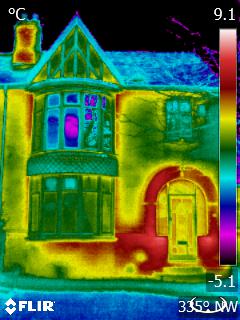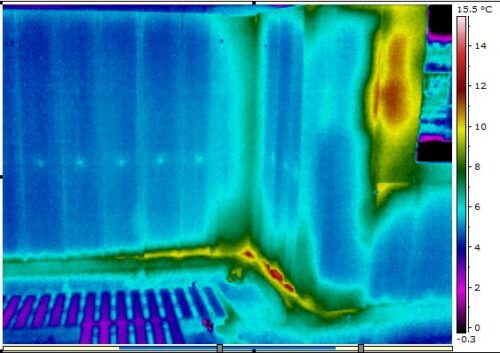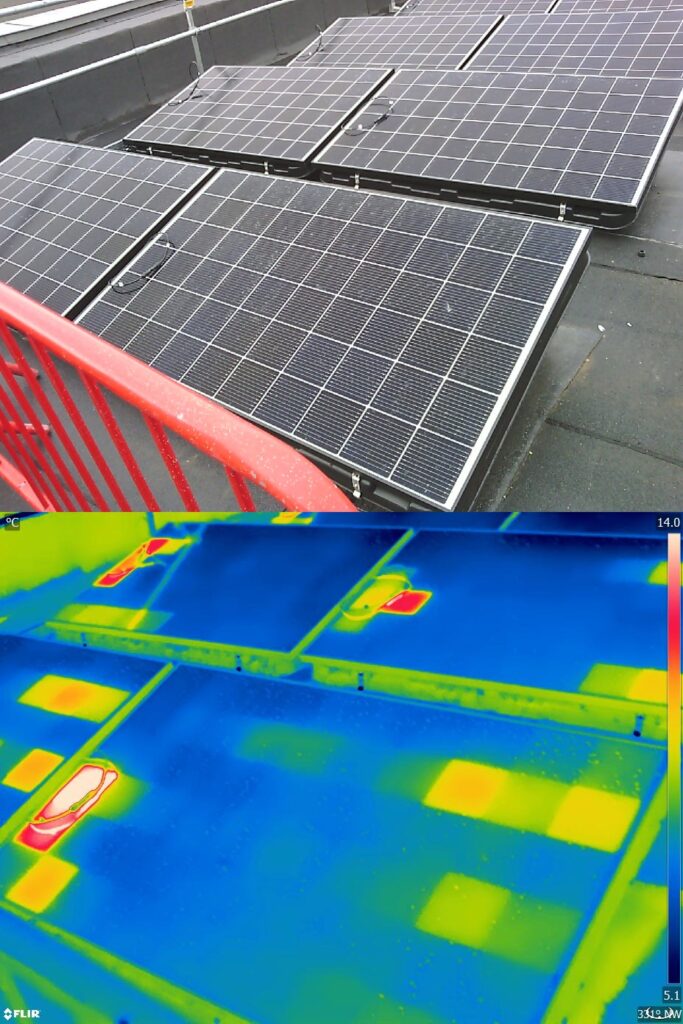A thermographic survey is a vital tool for improving build quality and ensuring optimal thermal performance in buildings.
This non-destructive method identifies hidden issues during and after construction, while also demonstrating compliance with environmental standards.

Effect of thermal bridging through arched brickwork
What is a thermographic survey?
Every object above absolute zero (-273.15°C) emits infrared light, which remains invisible to the human eye. Thermographic cameras capture this infrared radiation and convert it into visible images. This technology proves invaluable across various applications, such as building assessments, diagnosing electrical faults, and even in veterinary medicine.
Applications of thermography in buildings
In the realm of building assessments, thermographic surveys serve several key purposes:
- Thermal Bridging: Identify areas where heat escapes, which can lead to increased energy costs.
- Continuity of Insulation: Ensure insulation is properly installed to maintain energy efficiency.
- Air Leakage: Detect drafts and pinpoint points of air infiltration, improving overall comfort.
- Moisture Detection: Find water leaks or damp areas that can compromise structural integrity.
These assessments play a crucial role in verifying build quality without intrusive methods. Clients often request thermographic surveys, and they frequently form part of the BREEAM certification process.
Conducting an effective thermographic survey
To achieve optimal results, ensure a minimum temperature differential of 10°C between the building’s interior and exterior. Here’s how to prepare for a successful survey:
Ideal conditions for surveying

Evidence of air leakage in a parapet
- Timing: Conduct surveys several hours after sunset. This timing allows for an accurate assessment of the temperature differential.
- Building status: Make sure the building is complete and the heating system operates effectively. Keep the heating on for several days before the survey to reach the necessary temperature difference.
- Weather monitoring: Check the weather forecast ahead of time. Aim for wind speeds below 5 m/s and no precipitation, with external surveys best performed under cloud cover.
Preparing the Building
- Heating systems: Confirm that all heating systems in the surveyed areas function properly. If certain areas don’t heat sufficiently, consider using temporary electric heaters.
- Site management: Inform all site personnel about the importance of maintaining the heating conditions. Open doors or windows before the survey can lead to misleading temperature readings.
Thermographic surveys and BREEAM certification
BREEAM is a globally recognized environmental rating scheme that awards credits for conducting thermographic surveys. To achieve the necessary credit, the following conditions must be met:

Faulty PV cells
- A minimum temperature differential of 10°C.
- Wind speeds below 5 m/s.
- No precipitation during the survey.
Due to the narrow window of opportunity, internal surveys can often be more effective, minimising weather-related influences.
Broader applications of thermography
Beyond building assessments, thermography has a wide range of applications, including:
- Electrical Diagnostics: Identifying faults in electrical systems and photovoltaic arrays.
- Medical Diagnosis: Detecting health issues through thermal imaging.
- Military Uses: Various applications in security and surveillance.
Can we help with your project?
Would you like to discuss your project and explore how a thermographic survey can benefit you?
Call us at 0330 055 34 05 or email be@buildenergy.co.uk for more information.
